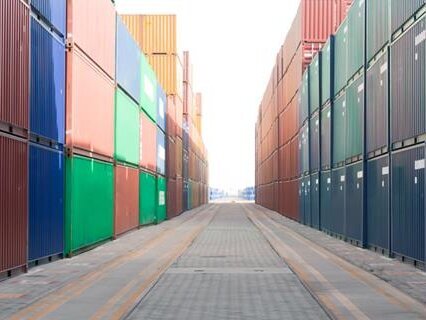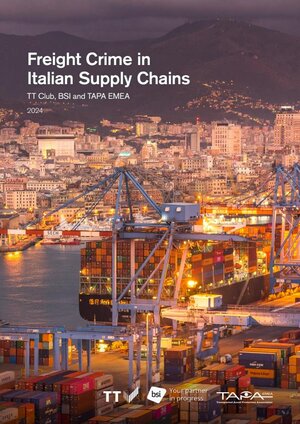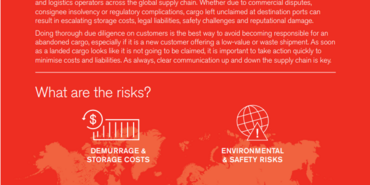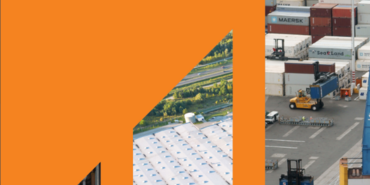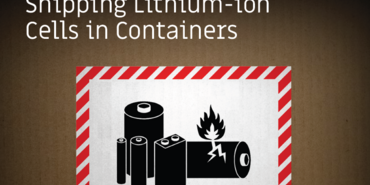Italy freight crime trends 2024 report
Italy has emerged as a significant hotspot for freight crime, with cargo theft incidents quadrupling in 2023 compared to two years prior, according to the latest joint report from TT Club, BSI and TAPA EMEA. The report highlights alarming trends affecting transport & logistics operators across the Italian supply chain.
The Lombardy region, particularly around Milan, remains the epicentre of cargo theft activity. As Italy's most industrialised region and a major transportation hub, Lombardy's strategic highways including the A50, A64, A1, and A4 are heavily targeted by organised criminal groups. The area's concentration of luxury goods production makes it particularly attractive to thieves seeking high-value cargo.
Organised crime syndicates, including the notorious Camorra clan, have infiltrated legitimate logistics firms to facilitate theft operations. These groups often use legitimate businesses as fronts whilst maintaining corrupt relationships with drivers and cargo handling facilities to gain inside information about valuable shipments.
Emerging security threats
The report identifies several evolving risks affecting Italian freight operations. Drones have become a sophisticated reconnaissance tool for criminal groups, enabling surveillance of facilities from distances up to 15 kilometres. Despite new regulations requiring drone operator registration, criminals continue to exploit these technologies, particularly around airport facilities where luxury airfreight cargo is vulnerable.
Credit fraud schemes have also intensified, with criminals establishing seemingly legitimate customer relationships before absconding with goods worth substantial sums. These sophisticated operations typically involve initial small shipments to build trust before escalating to high-value air freight consignments.
A critical vulnerability highlighted is the severe shortage of secure parking facilities. Italy maintains just one parking space for every 289 trucks, forcing drivers to park in unsafe locations. This situation is exacerbated by EU drivers' hours regulations requiring mandatory breaks every 4.5 hours, creating predictable opportunities for theft.
Rail transport, traditionally considered secure, has experienced increased targeting along routes between La Spezia Port and Melzo. Organised groups exploit scheduled stops where freight trains yield to passenger services, demonstrating the same systematic approach seen in road freight crime.
The report emphasises that effective claims management & digital services are essential for operators dealing with the aftermath of theft incidents, particularly given the sophisticated nature of modern cargo crime.
Key Takeaways
- Freight crime theft incidents in Italy quadrupled in 2023, with organised crime groups increasingly targeting high-value shipments
- Lombardy region around Milan remains the highest-risk area due to its industrial concentration and major transportation routes
- Emerging threats include drone surveillance, credit fraud schemes, and coordinated attacks using stolen vehicles to block emergency response
- Italy has only one secure parking space per 289 trucks, creating significant vulnerability during mandatory driver rest periods
- Rail freight is increasingly targeted, particularly at locations where trains stop to yield to passenger services
Frequently Asked Questions
What are the most targeted cargo types in Italy?
Food and beverages rank as the most stolen commodity, followed by clothing and apparel, reflecting Italy's luxury goods production. Pharmaceuticals are also heavily targeted by organised groups.
How do criminals use drones for cargo theft reconnaissance?
Criminal groups deploy drones to survey facilities from up to 15km away, mapping security cameras, guard positions, and identifying high-value cargo storage areas before planning theft operations.
What security measures are most effective against Italian freight crime?
Electronic seals with tampering alerts, GPS tracking with jamming detection, and positioning containers door-to-door on rail transport are recommended. However, secure parking remains the most critical need.
Documents
tt-club-bsi-theft-report-2024-italy.pdf (6.24 MB) 30/01/2025
- Date
- 14/08/2025
